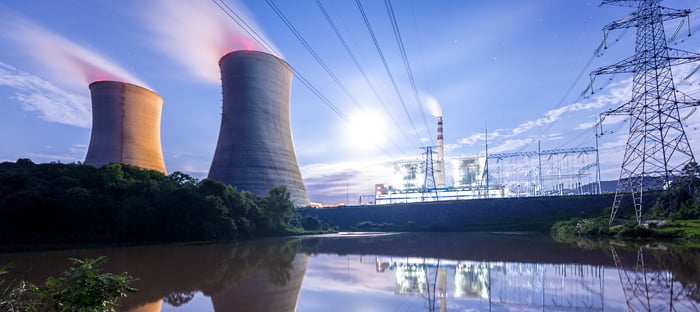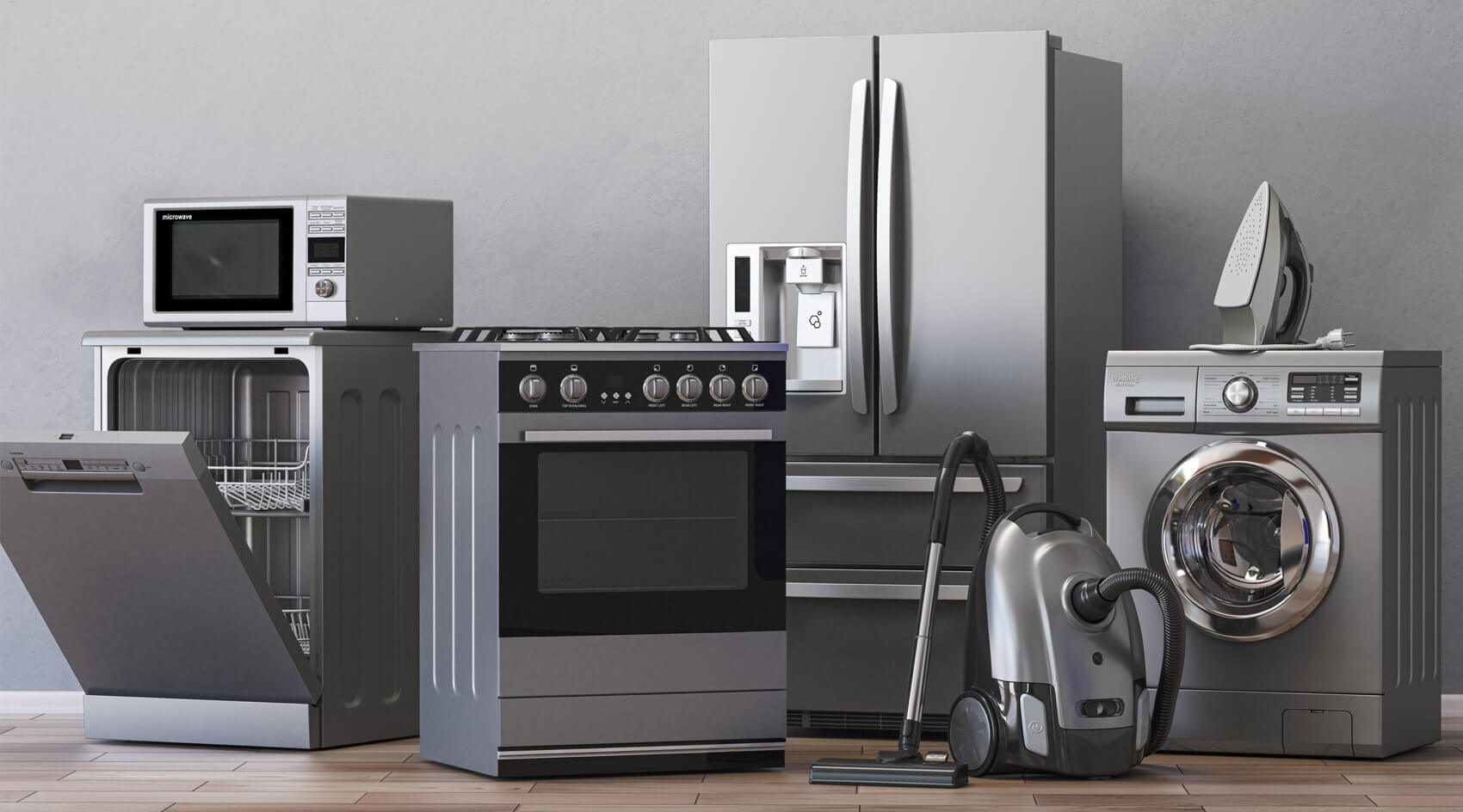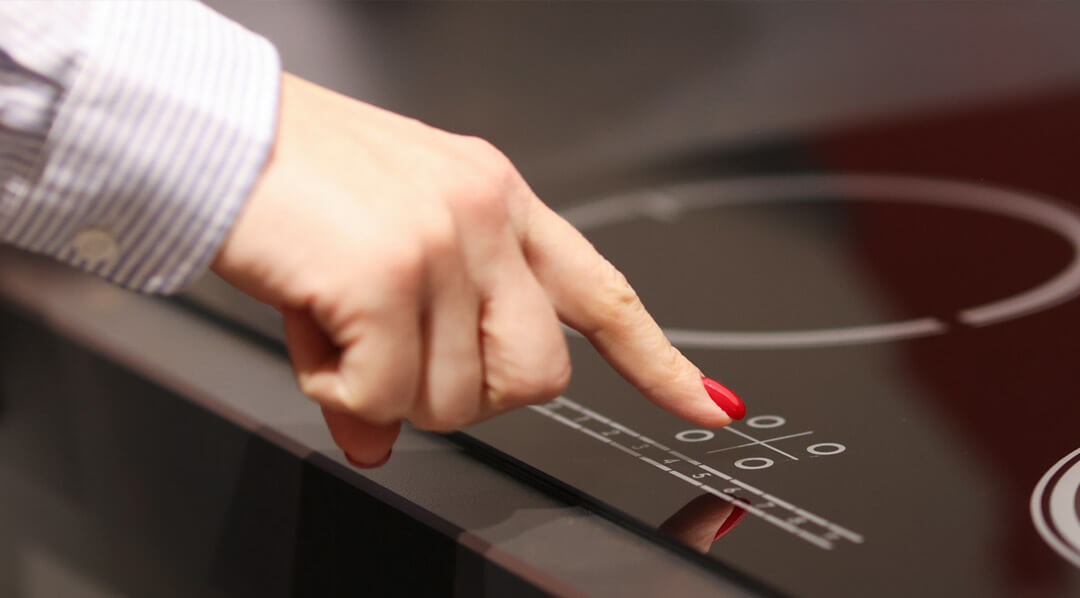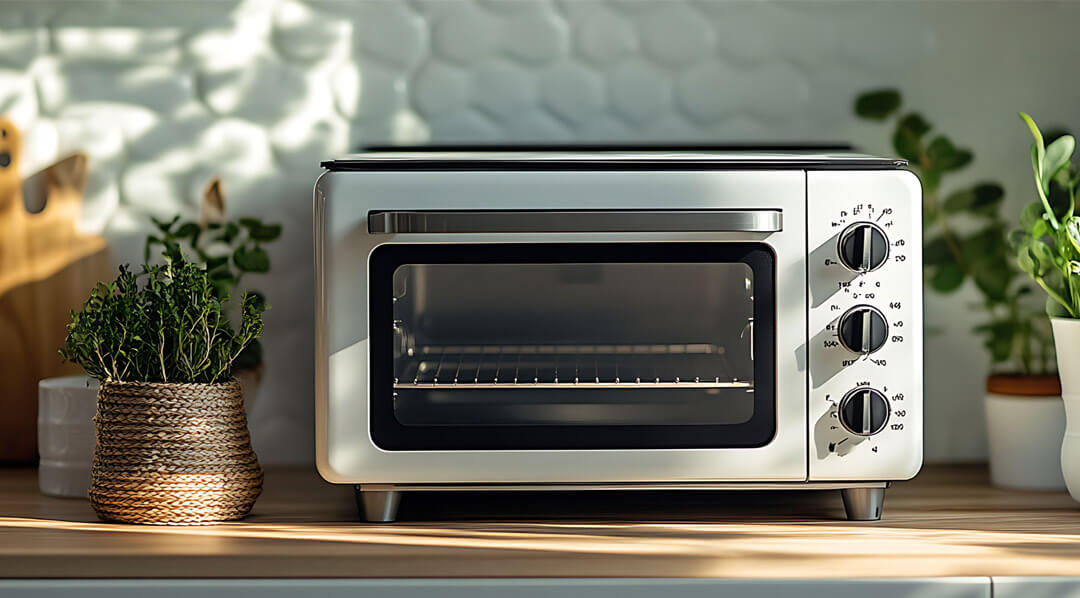When we think about saving on average household electricity usage, we often think about turning off lights when we leave a room or adjusting the thermostat to a more energy-efficient temperature. But we rarely stop to think: What uses the most electricity in a home?
The answer? In short: Home appliances – TVs, refrigerators, clothes dryers, computers, microwaves – the real workhorses that simplify our lives.
The humble but hardworking household appliance can contribute to higher electric bills. Understanding how much energy each appliance uses can be a game-changer, not only for your wallet but also for the planet. Reducing energy consumption can lead to savings on your electricity bill and contribute to a more sustainable future.
Let’s review what appliances use the most energy, those that use the least, and ways to reduce energy costs and save money.
Appliances that use the most energy and why
Depending on where you live in the U.S. and the age of your appliances, the fixtures that use the most energy can vary. But here are some that often rank in the top six:
1. Heating and Cooling Systems
Heating and cooling systems, including furnaces, air conditioners, and heat pumps, are among the biggest energy consumers. According to the U.S. Department of Energy, heating and cooling account for nearly half of the energy used in a typical American home. One of the easiest ways to cut down on energy use is by simply adjusting your thermostat – just a few degrees can make a big difference on your electricity bill.
2. Water Heaters
Water heaters are another major energy user, consuming about 14% to 18% of a household's total energy usage. Whether it's for showers, washing dishes, or doing laundry, water heaters work hard to maintain a steady supply of hot water.
3. Refrigerators and Freezers
How much wattage does a refrigerator use? A refrigerator’s power consumption depends on its age and standard refrigerator size. Newer refrigerators and freezers are much more energy efficient than older models, but they still account for around 10% to 15% of a home's total energy use because they’re running 24/7 to preserve food.
4. Electric Washer and Dryer Set
Laundry appliances, particularly dryers, are notorious for their high energy consumption. A typical dryer uses more energy than a washing machine, as it requires a lot of power to generate heat to remove moisture from clothes.
So how much electricity does a dryer use? It depends on its age. Newer models are much more energy efficient. Here’s a tip: Regular cleaning and maintenance can restore any lost energy efficiency from lint and dust buildup.
5. Dishwashers
Dishwashers are convenient for cleaning dishes, but they can also be energy hogs. Running a dishwasher consumes energy for heating water, pumping, and drying. Energy-efficient models can help reduce energy usage, but dishwashers still account for a noticeable portion of a household's energy bill. If you're running the dishwasher daily, that could equate to about 30 to 60 kWh of electricity in a month.
6. Ovens and Stovetops
Cooking appliances, such as ovens and stovetops, also use a considerable amount of energy. Electric ovens and stovetops are particularly energy-intensive, while gas models tend to be more energy-efficient.
Appliances that use the least energy and why
The appliances that use the least energy can vary by your location and their age. But here are the top six:
1. LED Light Bulbs
LED light bulbs are a great example of energy-efficient appliances. They use up to 90% less energy than traditional incandescent bulbs and have a much longer lifespan, making them a cost-effective and eco-friendly lighting solution.
2. Ceiling Fans
Ceiling fans are a good alternative for cooling a room because they use significantly less energy than air conditioners. Fans move air around the room and create a cooling breeze without actually making the air cooler. The direction of the fan blades can also help out your heating and cooling systems depending on the temperature outside.
3. Microwave Ovens
How many watts does a microwave use? Not as many as you think. Microwave ovens are surprisingly energy-efficient compared to traditional ovens. They use less energy to heat food quickly, making them a convenient and energy-saving option for cooking and reheating meals.
4. Electric Kettles
A small electric kettle is a quick and efficient way to boil water. It uses less energy than a stovetop kettle and heats up fast, so it’s a convenient and energy-saving addition to your kitchen.
5. Laptops
Laptops are more energy-efficient than desktop computers, so they’re a smarter choice if you want to save energy. Plus, most laptops come with built-in power-saving features that can help cut down energy use even more.
6. Toaster Ovens
Toasters are another energy-efficient cooking appliance. They use less energy than traditional ovens and are perfect for small meals or reheating leftovers.
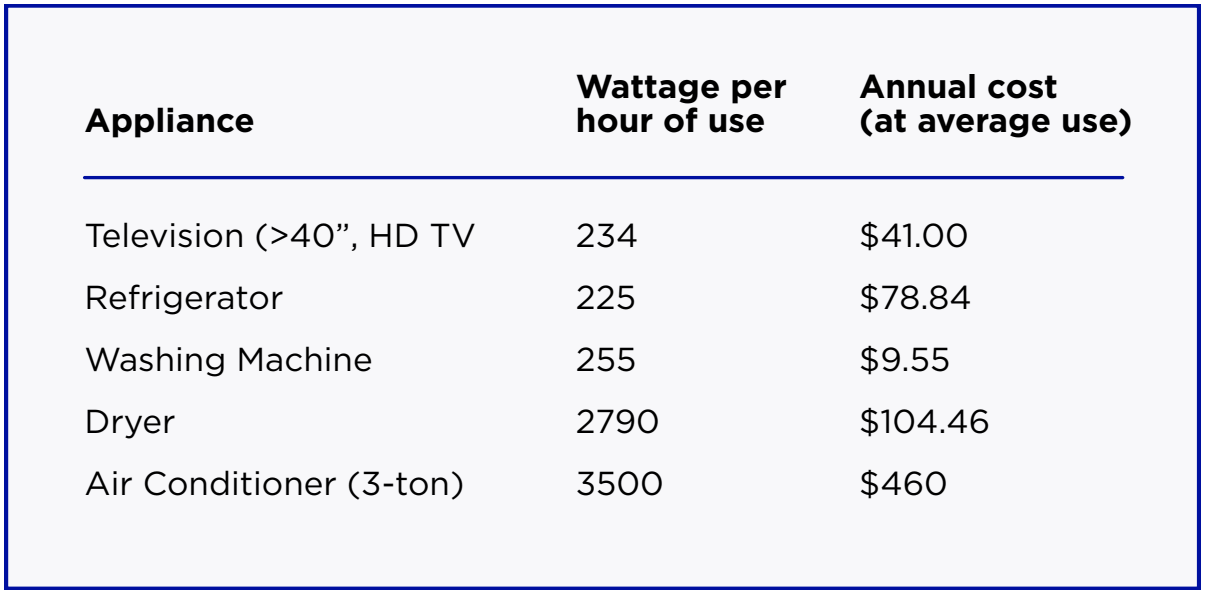
If you’d like to know more about a specific appliance, the Department of Energy has a convenient calculator to help determine how much energy each of your appliances is consuming and the cost to operate it. You can find it on the DOE’s Estimating Appliance and Home Electronic Energy Use page.
Tips on how to reduce the energy usage of most appliances
While understanding which appliances use the most and least energy is important, there are also steps you can take to reduce overall energy consumption in your home:
1. Upgrade to Energy-Efficient Appliances
Look for appliances with the ENERGY STAR certified label, which indicates that they meet strict energy efficiency guidelines set by the U.S. Environmental Protection Agency. Upgrading to energy-efficient models can significantly reduce your energy usage and help lower your electricity bill.
2. Unplug Idle Appliances
Unplugging electronics and appliances when they are not in use can make a big difference. Many devices continue to consume energy even when turned off, otherwise known as "phantom" or "standby" power. By using power strips and switching them off when devices are not needed, you can cut down on this wasted energy.
3. Use Appliances Wisely
Be mindful of how you use your appliances. For example, run full loads in your dishwasher and washing machine, and use energy-saving settings whenever possible. Additionally, consider air-drying clothes instead of using a dryer.
Set your refrigerator temperature to 37-40°F and your freezer to 0-5°F. Ensure that the seals on the doors are airtight, as any gaps can let cold air escape and cause the appliance to work harder. Regularly defrosting the freezer and keeping it well-organized can also improve its performance. It's also advisable to keep your fridge away from heat sources, such as ovens and direct sunlight, as this can cause the refrigerator to use more energy to maintain the desired temperature.
For washing machines and dryers, always wash full loads and use cold water whenever possible. Modern detergents are designed to work effectively in cold water, which reduces the energy needed to heat water. For drying clothes, consider using a clothesline or drying rack instead of the dryer. If you do use a dryer, make sure to clean the lint filter after every use to improve air circulation and efficiency. Additionally, using the dryer’s moisture sensor feature can help prevent over-drying and save energy.
4. Maintain Your Appliances
Regular maintenance can help your appliances run more efficiently. Clean refrigerator coils, replace HVAC filters, and check for leaks in your water heater to ensure that your appliances are operating at their best.
Check out this inclusive home maintenance checklist.
5. Monitor Your Energy Usage
Use an energy monitor to track your household's energy consumption. This can help you identify which appliances are using the most energy and make adjustments to reduce your overall power usage.
Saving for the future
Household appliances play a crucial role in our daily lives, but they also contribute to our energy consumption. By understanding which appliances use the most and least energy, you can make informed decisions to reduce your energy bills and minimize your environmental impact.
Additionally, adopting energy-saving habits, upgrading to energy-efficient appliances, and shopping for a lower electric rate could help for a lesser monthly appliance impact and create a more sustainable home.
Ready to make the switch?
Fill in your ZIP code below to find the rate that’s right for you.


